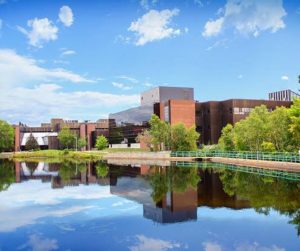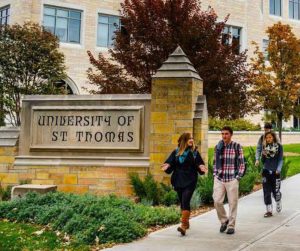Worst Universities In Canada 2024: Top 9
Worst Universities In Canada: One of the most significant decisions a young person can make is where to attend school. Regretfully, the choice is not simple. There are a plethora of factors to take into account, including the cost of tuition, the distance from home, the caliber of the higher learning institution, and even the city’s safety. Then, there are private matters that influence the choice. Given that everyone knows that Canada is among the best places to study, some people may be approaching this topic with cynicism.
Even though Canada is a prominent center for higher education, some of its universities are ranked lower than others, even though they are still far better than some universities abroad. These universities are, therefore, known as Canada’s lowest-ranking universities. It doesn’t mean they are worthless to be the lowest ranked. It simply means that, although they compete well in international rankings, they are ranked poorly by well-known ranking platforms within Canada.
To the best of their abilities, they also offer excellent instruction, and their degrees are accepted globally, just like those from other Canadian universities. There are benefits to these low-ranked Canadian universities: they are affordable and have a small enrollment, which guarantees that resources are shared equally among students. This article will teach you about the worst universities, which might help you when applying to Canadian universities. These universities are usually among the lowest ranked in Canada, but they are not intrinsically poor.
Top 9 OF the Worst Universities In Canada
1. University of Winnipeg: One of the lowest rates of graduation in all of Canada is found at the University of Winnipeg. The percentage represents full-time students who completed their degrees by 2014 after beginning their studies in 2007. Although the university does offer a graduate program, it does not offer as many courses as its competitors.

Rather, applicants apply because it’s an undergraduate study location. Its low graduation rate contributes to its unfavorable reputation. Its simple admissions process, which leaves students unprepared for the demanding course load they may encounter in their first few years on campus, is blamed by some for the low enrollment. The University does have some advantages, though.
2. Universite De Moncton: The second-largest city in the province, Moncton, is home to the main campus of the Université de Moncton, a French-language university with campuses spread throughout various New Brunswick cities. It offers low tuition and affordable housing, like numerous other institutions in the maritime provinces, which are important benefits for students trying to reduce their debt after graduation.

Unfortunately, there are some drawbacks to this French school. The school’s widespread appeal is the first. Students who speak English cannot attend, and outside of Quebec, there is little need for French-speaking workers. This restricts graduates’ employment options. Like other small cities, Moncton offers little to do off campus. A low graduation rate also affects Université de Moncton.
3. Brandon University: Brandon College in Brandon, Manitoba, Canada, was the forerunner, having been established in 1889. Given that it comes in last in the Macleans Reputation Ranking, Brandon University is among the worst universities in Canada. Approximately 3375 students enroll in full-time and part-time postgraduate and undergraduate programs at this liberal arts and sciences college for undergraduates.

Postgraduate students are rare at the school; undergraduates make up the majority. The institution offers academic programs across six major faculties that focus on various subject areas. There are ample resources to go around, and the small class sizes facilitate easy communication between students and instructors.
4. Cape Breton University: Sydney is home to Cape Breton University, which is situated on Cape Breton Island in Nova Scotia. The school’s affordable housing and low tuition are major draws for many students. However, you get what you pay for, as they say. Many students find the campus to be a poor choice because of its relative remoteness and inadequate public transportation options.

Since its primary focus is undergraduate education, there are very few graduate programs available to students who have completed their undergraduate degrees. Due to the somewhat weak local economy, there is increased competition for part-time jobs during the school year or full-time employment after graduation.
5. Nipissing University: It was established in 1992 and is situated with a view of Lake Nipissing in Ontario, Canada’s North Bay. This university ranks among the worst in Canada. Also, Macleans, a well-known website that rates Canadian universities, lists it as the nation’s lowest-ranked university. Nipissing University is a public liberal arts university with an emphasis on undergraduates.

It is renowned for offering small class sizes, accessible professors, individualized attention, and research opportunities to undergraduate students. The University of Nipissing comprises three faculties. The faculty members assist Nipissing University in providing over thirty undergraduate and graduate degree programs on a full-time and part-time basis.
6. St. Mary’s University: Halifax, Nova Scotia’s south end, is where St. Mary’s University is situated. Its founding dates back to the early 1800s, making it one of Canada’s oldest universities. St. Mary’s is an ancient school, but it has remained small; there are currently about 6,000 students enrolled.

The school offers notable programs in business and chemistry. St. Mary’s has a few drawbacks despite being a passably good institution that unassumingly receives respectable rankings among the best universities. Its small campus and limited undergraduate program selection are evident when compared to nearby larger universities. It also has a bad reputation for inflating grades, though some people view this as a benefit. It also experiences a low graduation rate.
7. University of Northern B.C: In Prince George, British Columbia, is the University of Northern B.C.. Approximately 4,000 students are enrolled at this time. Having only started classes in 1992, it is among Canada’s newest universities. Remarkably, for a university the size of UNBC, its medical program is well-known.

The campus, perched on a hill with a view of the city, is well-liked by most students. Still, a lot of people lament the lack of activities and the inadequate selection of meals. In addition, not many programs are offered by the school, so not many people can enroll there. Its poor graduation rate is another issue. Ranking among the lowest in the country, only 61.1% of students graduate.
8. Laurentian University: One of the cornerstones of Sudbury and Northern Ontario, Laurentian University, has recently experienced severe financial difficulties. It was always a highly regarded university offering a wide range of undergraduate programs and high graduation rates. When the school filed for bankruptcy in February 2021, more than 100 tenured faculty members were let go, and academic programs were drastically reduced and redesigned.

Rather than accepting a cash infusion from the provincial government, the University filed for protection. The school is now on the verge of reaching an agreement on a repayment plan with its creditors and initiating the rebuilding process.
9. St. Thomas University: St. Thomas University, one of Canada’s worst universities, is associated with the Roman Catholic Church. The university, a public Catholic liberal arts college, was established in 1910 and is situated in New Brunswick.

A broad spectrum of academic courses are offered by the University of St. Thomas, specifically in the areas of bachelor’s degrees in applied science, arts, education, and social work. With only 1,900 undergraduate students, this is a relatively small school.